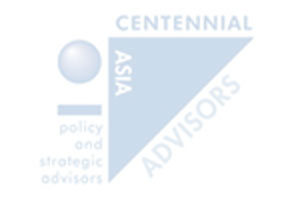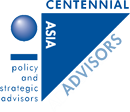Asian Insights
A summary of “Asian Insights” weekly update is published here. The full version is available through paid subscription. Please click here to register your interest. Our executive will get in touch with you.

Highlights from the CAA Weekly Table:
Asian political risks:
- China and India risk sleep-walking into another round of clashes. Both are deploying troops and more sophisticated weaponry to the border. Talks to disengage troops have failed to produce results.
- South Korea’s presidential election looks set to be won by the incumbent liberal party. That is likely to lead to more fiscal spending but also a slightly faster pace of monetary tightening.
Asian economic prospects:
- Looking beyond today’s better-than-expected GDP data, China’s economy is facing swelling headwinds: Consumer spending is weak, the property sector shakeout persists and covid- related restrictions are beginning to cause supply chain problems. More stimulus will be needed, today’s tepid monetary easing and other measures taken so far will not suffice.
- Elsewhere, the omicron wave is hurting rebounds in Indonesia and the Philippines. Lacklustre investment is holding back India’s recovery. But Malaysia’s economy is on a tear
Indonesia: Fiscal dynamics on a solid footing
- For 2021, the fiscal deficit is projected at 4.65% of GDP, or a full percentage point lower than the budgeted 5.7% of GDP. This was partly due to higher commodity prices which produced heftier collections, particularly in hydrocarbon royalties and commodity revenues.
- The fiscal deficit will narrow further over 2022 and 2023. We expect economic growth to surprise positively, which should deliver stronger revenues than budgeted. Moreover, the 1% VAT tax hike will kick in from April, which should give the government considerable fiscal room. No doubt, the government will restrict spending should untoward developments put the fiscal target at risk.
- This competent fiscal management should provide Indonesia with buffers in case the Fed’s monetary tightening precipitates capital outflows from emerging markets. There is a risk though that a better fiscal position may encourage parliamentarians to press for greater public spending which could then put the deficit target at risk.
Singapore: Multiple catalysts, upside surprise to 2022 growth likely
- A confluence of growth drivers is falling into place. First, we see borders being opened progressively through the year, allowing the return of migrant workers whose absence has constrained production in key sectors.
- Second, Singapore’s manufactured exports will prosper as semiconductor demand continues to strengthen, even off a high base.
- Third, the recovery in regional demand will spur a rebound in the cluster of services that cater to the region including finance and trade
- Fourth, Singapore’s modern services sector is enjoying a secular surge.
- Finally, backed by strong balance sheets, the household sector is in a position to ramp up spending, boosting domestic demand.

Highlights from the CAA Weekly Table:
Asian economic prospects:
- China is at a turning point: The real estate contraction is hurting and there are signs of behavioural changes which could deepen a slowdown. The authorities are likely to shift to a more nuanced approach to the pandemic combined with carefully calibrated policy support.
- Elsewhere economies remain on a recovery path: India’s activity indicators remain positive but there are risks to economic stability. The South Korean and Malaysian economies are performing well but might moderate a tad. The Philippines will suffer more from the the omicron variant, so its path to recovery might be slower. Indonesia’s recovery remains on track but a rebound in demand could stir price pressures.
As the year begins, where does the region stand?
(A) Geo-political risks: Indo-Pacific arena heats up
- The US and Japan are further strengthening their defence ties as they face up to China’s challenge: they will step up collaboration on military technology. Japan & Australia have deepened their defence cooperation through their new Reciprocal Access Agreement. Japan is also extending its naval build-up.
- China may have erred in pressuring Indonesia over the latter’s oil exploration activities in waters claimed by China but belonging in Indonesia’s exclusive economic zone. This is likely to push Indonesia into a more robust stance towards China.
- China’s BRI projects may be turning out to be costlier than it had expected. Sri Lanka, where China is a major investor is pressing China to restructure its debt as its economic crisis deepens. In Pakistan, where China made its biggest BRI bets, project returns are lower than expected and debt repayments will need to be restructured. Several Chinese nationals have
also been killed in terrorist incidents, adding to China’s disappointment. - China is likely to recalibrate strategy to deal with these challenges. It needs to dial down its assertiveness towards other Asian countries and will revise its BRI to be more cautious and selective in its commitments.
Omicron variant: Mere speed bump rather than pothole in path to recovery
- PMI surveys show the regional economies performing well. Manufacturing is supported by improving demand. Price pressures, while diminishing somewhat, remain a risk, though.
- The omicron variant will produce a surge in infections across our region. However, if the pattern in South Africa is repeated, this surge will end fairly quickly: Our baseline scenario is for caseloads to peak later in early February before falling sharply by March.
- The economic damage is likely to be limited in duration and scale because governments are avoiding overly stringent responses, helped by rising vaccination rates. Consumers and businesses have also learnt to adapt better to surges of infections.
